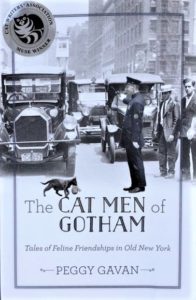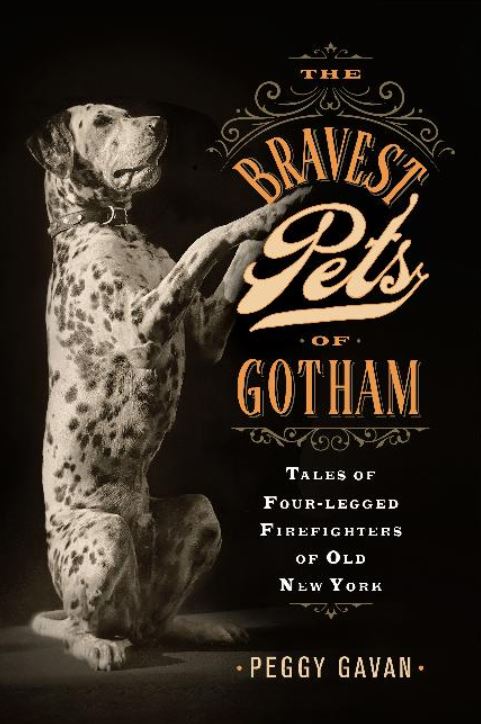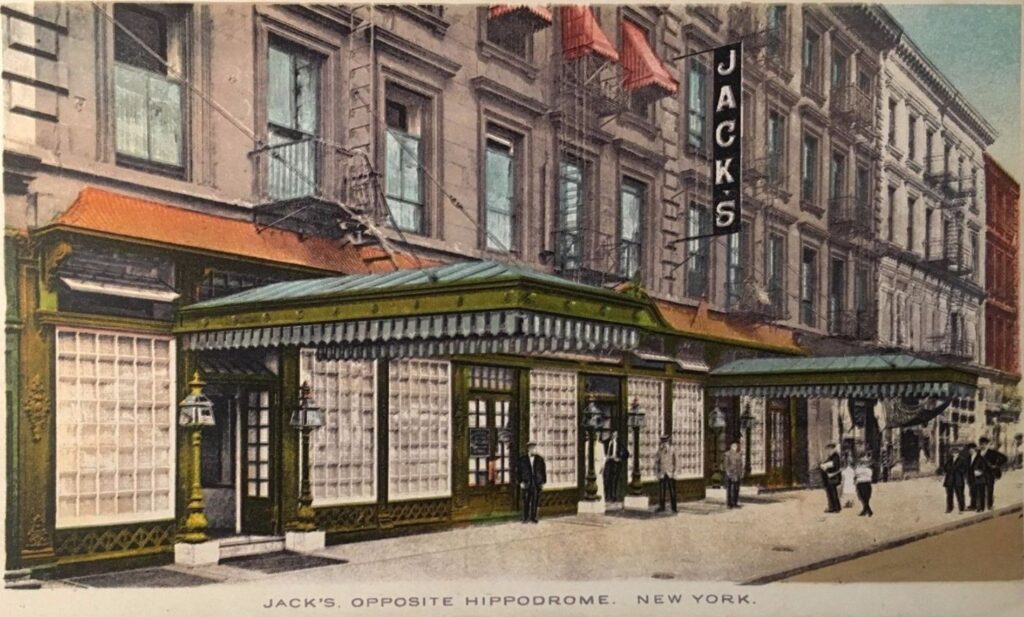
From 1891 to 1925, Jack’s Restaurant (aka Manhattan Oyster Bar and Chop Bar) on 6th Avenue at 43rd Street was one of the most popular restaurants in midtown Manhattan. Located across from the Hippodrome (1905-1939), which was then called the world’s largest theater, Jack’s was the after-hours place to be for Broadway celebrities, rowdy college boys, and notable guests including Teddy Roosevelt, Diamond Jim Brady, and O. Henry.
Jack’s Restaurant, owned by Jack Dunston, occupied the ground floor of a four-story with basement building at 761-765 6th Avenue (now the site of 1125 6th Avenue).* The three floors above were occupied by apartments. The top floor was occupied by a Mrs. James L. Ward, who took in sewing, boarders, and cats. Lots of cats.
Mrs. Ward, a widow and proverbial “crazy cat lady,” took a lease of the top floor in July 1910. At that time, she had two cats, a pug dog, and a parrot. But then the cats had two cats, and they had two cats, and so on, and so on.
Within a few months, the downstairs neighbors began to complain about the cats. They told Jack Dunston that the place “was suffering from a violent eruption of cats. It was broken out with cats,” they said, “like a case of nettlerash.”
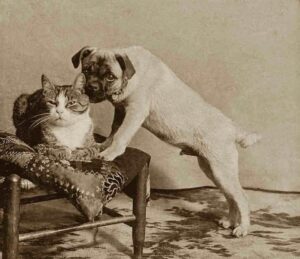
Upon receiving the complaints, Jack went upstairs to investigate. On the way up, he saw several cats cascading down the stairs. Inside Mrs. Ward’s apartment, he found an assortment of cats running from room to room. In the kitchen, he met a dishwasher named–I’m not making this up–Kitty Katzenberg. He fired poor Kitty on the spot.
Over the next few months, on several occasions, Jack told Mrs. Ward that she would have to vacate the apartment and take her cats with her. Each time he told her to leave, Mrs. Ward refused to budge. And each time he paid a visit, there were a few more cats.
In March 1911, Jack went to the Municipal Court and received a warrant for dispossession on the ground that she was “harboring a nuisance.” A few men from the sheriff’s office arrived later that afternoon to evict Mrs. Ward and her 34 cats.
Holding a gray gentleman cat named Plutarch’s Lives and a lady cat named The Nine Muses, Mrs. Ward defied the men to kick her out. A group of men marched up the stairs and proceeded to carry everything out of Mrs. Ward’s apartment, including bedding, furniture, cats, the pug, the parrot, more cats, sewing machines, utensils, pictures, ornaments, carpeting, clothing, and more cats.
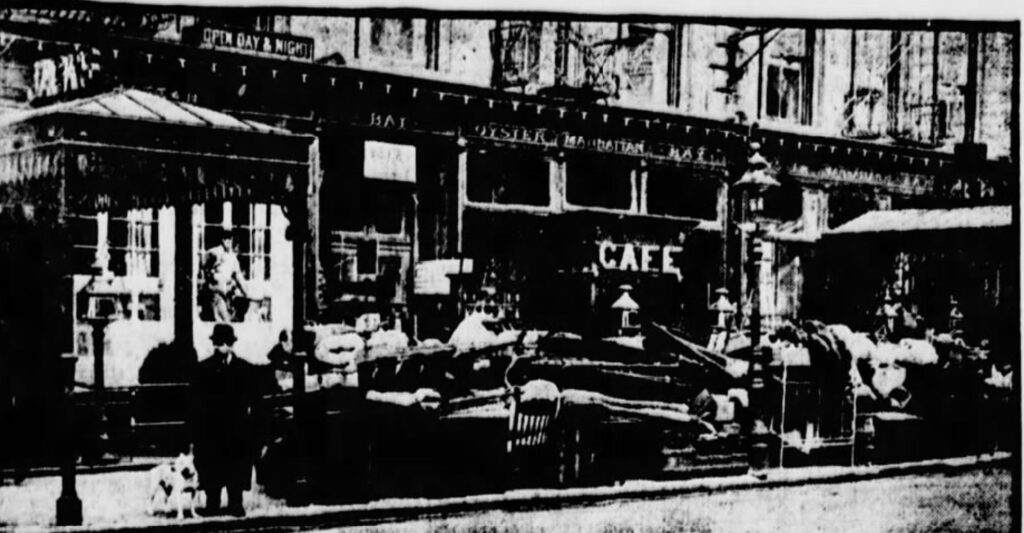
The men dumped everything on the sidewalk, smack in front of Jack’s Restaurant. This created a barricade of sorts on the sidewalk, which Mrs. Ward sat upon. It didn’t take long for crowds of people to begin gawking at the odd sight.
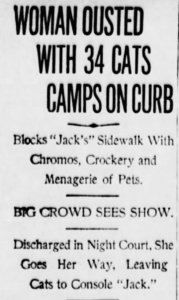
The next morning, Mrs. Ward was still perched on the barricade, and her three dozen cats were weaving in and out of the pile. As a reporter for the New York Evening World noted, “ever larger and more enthusiastic grew the crowd until it blocked Sixth Avenue.” Bystanders told the reporter that “it was a spectacle worth seeing.”
Police Officer Cavanaugh ordered the woman to leave, but Mrs. Ward told him that home was where her cats were. And her cats were in front of Jack’s Restaurant (probably hoping to get a few bits to eat).
Officer Cavanaugh told Mrs. Ward that she would have to go to the Night Court, and then he offered to walk her there. Many of the cats followed the pair, including The Nine Muses, Plutarch’s Lives, Violin Strings, Celluloid, Double Cross, and several others whose names the reporter could not write down fast enough.
Mrs. Ward was released with only a reprimand from the magistrate, but she never returned to her apartment above Jack’s Restaurant. She took most of the cats with her, but several felines were orphaned and remained on the pile in front of Jack’s.
*All the properties on 6th Avenue were renumbered in 1929 as part of the 6th-Avenue subway expansion project.
A Brief History of Sixth Avenue and 43rd Street
The site of Jack’s Restaurant was quite historic, owing to the fact that this was once part of the famous Medcef Eden farm.
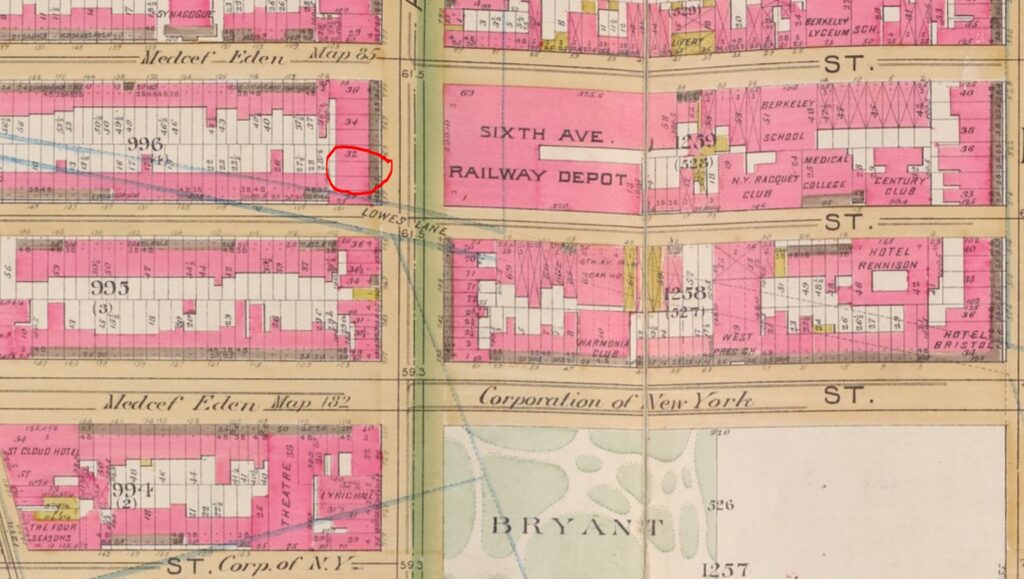
The area of New York City extending along the old Bloomingdale Road (what we call Broadway today) — from 42nd Street to 46th Street and thence northwesterly to the Hudson River — was the property of an Englishman (from Yorkshire) named Medcef Eden.
Eden was a farmer and a prosperous brewer who lived with his wife, Martha, at 85 Gold Street, at the northwest corner of Spruce Street. Eden owned a lot of property in downtown Manhattan, including much of the property facing Ryder Street (or Alley) in the mid- to late 1700s (as many as 20 buildings). Today’s Edens Alley was likely a horse cart lane leading from Gold Street to his brewery.
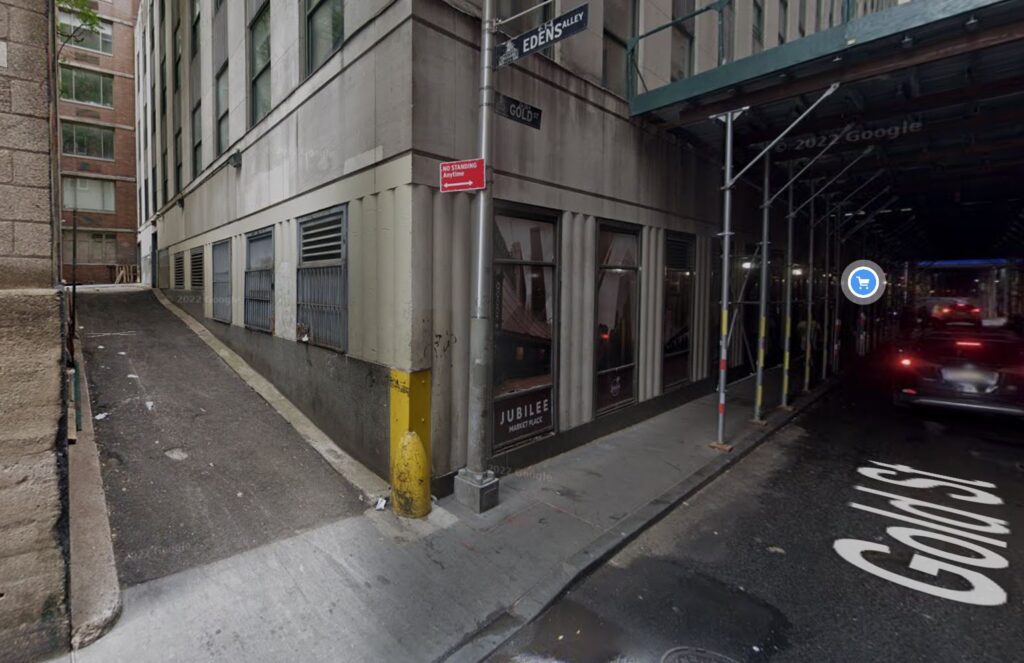
Eden, who was a close friend and associate of Aaron Burr, also owned a large parcel uptown near today’s Time’s Square, called the Eden Farm. Here, he raised the hops for his brewery as well as potatoes, sheep, poultry, and horses.
In his will in 1798, Eden left one portion of his vast Manhattan real estate holdings to his son Joseph and another to his son Medcef Jr., with the provison that if either died without children, the other son would inherit the deceased brother’s share. In case both sons died without children, the property would go to other relatives.
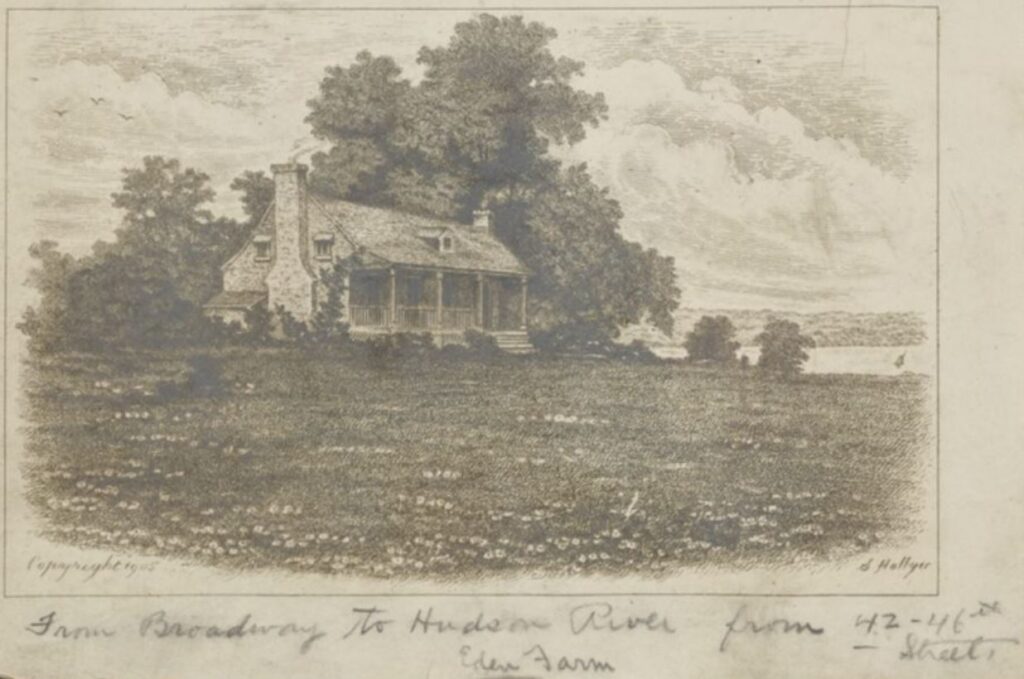
As it turns out, Joseph died without children, and then Medcef Jr. died without children, leaving his estate to his wife and others of his choosing. That didn’t turn out too well for the Edens.
One day in 1803, William Cutting–the sheriff of the City and County of New York–and a fur merchant with a German accent purchased for $25,000 a one-third interest in an outstanding mortgage on the 70-acre Eden farm. For that price, the two men got 22 acres of land, two dwelling houses, and two barns. Cutting took the western portion of the land and the fur merchant took the eastern section.
Although the Eden heirs in England brought a suit against the sheriff and fur merchant, in the end the buyers prevailed. The fur merchant was, after all, John Jacob Astor. His land eventually became known as Times Square.
